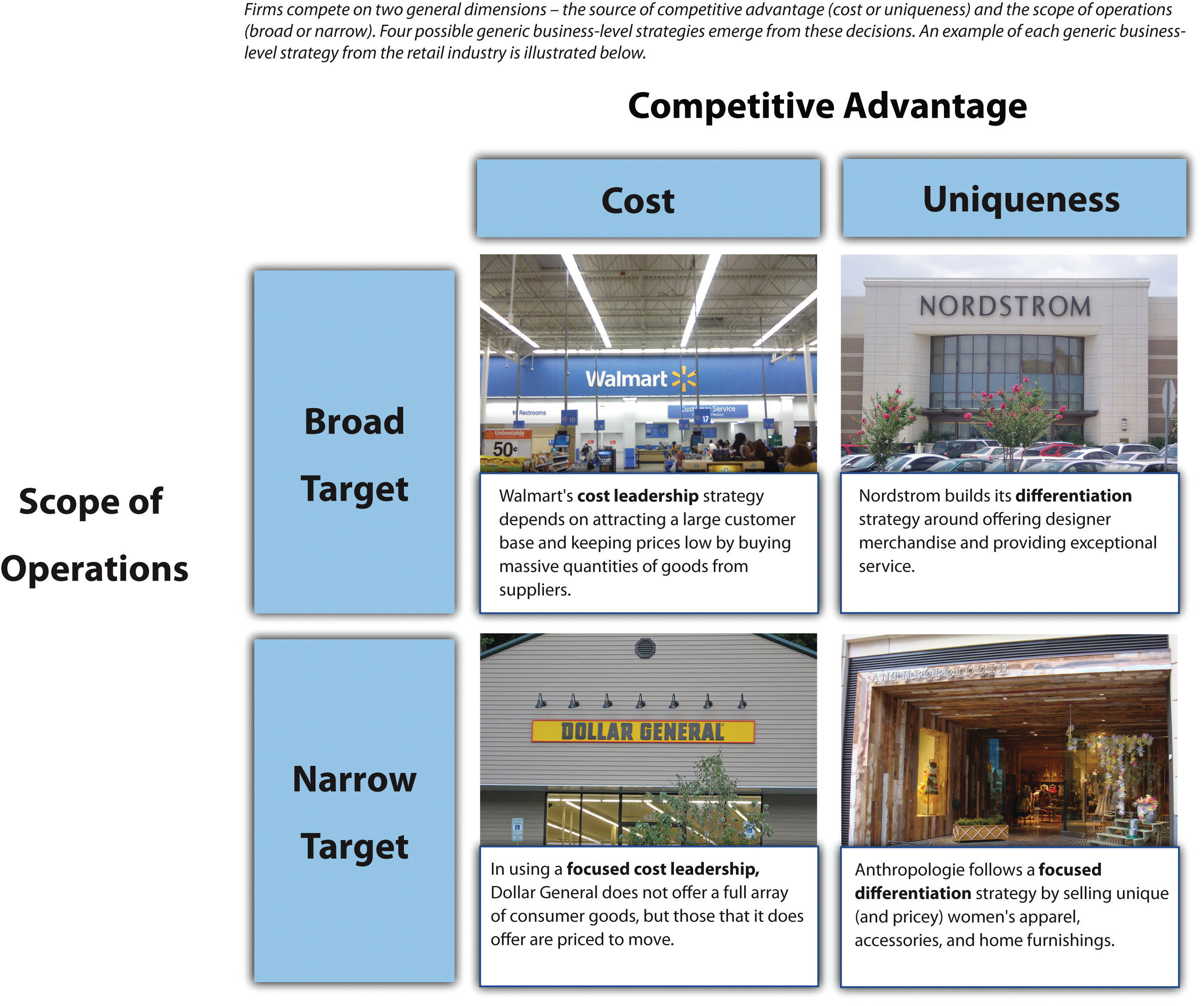IDENTIFYING COMPETITIVE ADVANTAGES
- To survive and thrive an organization must create a competitive advantages
- Competitive advantages: a product or service that an organization's customs place a greater on the similar offering from a competitor.
- First-move advantage: Occurs when an organization can significantly impact its market share by being first to market with a competitive advantage.
- Organization watch their competition through environmentals scanning : the acquisition and analysis of events and trends in the environment external to an organization.
- Three common tools used in industry to analyze and develop competitive advantages include:
- Porter's Five Forces Model ( for evaluating industry attractiveness)
- Porter's Three Generic Strategies ( for choosing a business focus)
- Value Chain ( for executing business startegy)
The five forces model-Evaluating business segments
- Buyer power
High when buyers have many choices of whom to buy from and low when their choices are few.
Way to reduce buyer power is through loyalty programs.
- Loyalty program : Rewards customers based on the amount of business they do with a particular organization.
- Switching cost : Cost that can make customers reluctant to switch to another product or service.
2. Supplier chain
- High when buyers have few choices of whom to buy from and low their choices are many.
- Supply chain: Consist of all parties involved in the procurement of a product or new materials.
- Organization that are buying goods and services in the supply chain can create a competitive advantage by locating alternative supply source through B2B marketplaces
- Business-to-business marketplace : an Internet-based service that brings together many buyers and sellers.
- Two types of B2B marketplace :
-Private exchange : a single buyer posts its needs and opens the biding to any supplier who could care a bid
-Reverse auction : An auction format in which increasingly lower bids are solicited from organizations willing to supply product or service at an increasing lower price.
3. Threat of substitutes product or services
High when there are many alternatives to a product or service and low when there are few alternatives from which to choose.
Switching cost : Costs that can make customers reluctant to switch to another product or service.
4. Threat of new Entrants
High when it is easy for new competitors to enter a market and low when there are significant entry barriers to entering a market.
-Entry barriers : A product or service feature that customers have come to expect from organizations in a particular industry and must be offered by an entering organization to compete and survive.
5. Rivalry among existing competitors
- High when competition is fierce in a market and low when competition is more complacent.
- Although competition is always more intense in some industries than in others, the overall trend is towards increased competition in just about every industry.
Three Generic Strategies- creating a business focus
Once on organization chooses its strategy, it can use tools such as the value chain to determine the success or failure of its chosen strategies.
- Business process : A standardized set of activities that accomplish a specific task, such as procesing a customer's order.
- Value chain : Views an organization as a series of processes, each of which adds value to the product or service for service customer.









No comments:
Post a Comment